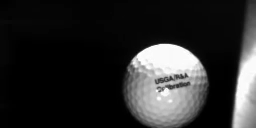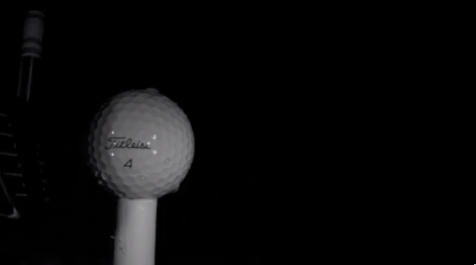Phases:
The impact of a golf ball involves several key physical processes that affect its behavior in flight and its interaction with the ground. Here are the main physical processes that take place at impact with the ground. the best golf balls:
1. Compression:
At impact, the golf ball is compressed due to the force applied by the face of the golf club. Ball compression is influenced by factors such as swing speed, impact angle, and ball construction features such as the number of layers and cover softness.

2. Kinetic Energy Transfer:
The kinetic energy stored in the golf club during the swing is transferred to the ball at impact. This transfer of energy is essential to propel the ball into flight and determines its initial velocity.
3. Spin Generation:
Contact between the clubface and the ball generates spin around the axis of the ball. Spin influences the ball's trajectory and stability in flight, as well as its ability to stop on the green.
4. Takeoff and Trajectory:
The launch angle, which is the angle between the clubface and the vertical at impact, determines the initial height of the ball. The resulting flight path is affected by this angle and the direction of the swing.
5. Aerodynamics and Air Resistance:
The presence of dimples on the surface of the ball influences its aerodynamics. Dimples reduce air resistance, allowing for more efficient flight and maximizing distance.
6. Magnus Effect:
The spin of the ball around its axis creates the Magnus effect. This effect interacts with the dimple design to influence the amount and direction of spin, affecting the trajectory of the ball.
7. Compression and Rebound on the Green:
When the ball lands on the green, it experiences additional compression and may bounce before coming to rest. Interaction with the putting surface and the speed of the ball upon landing affect this process.
8. Rolling and Friction:
After landing, the ball can roll on the ground. Friction between the ball and the ground, as well as the slope of the ground, influence its movement.
9. Energy Transfer in Putting:
In putting situations, energy transfer is less impulsive but still critical. Speed and direction at impact affect the ball's path on the green.
10. Sound and Vibrations:

Impact generates sound and vibrations that provide feedback to the golfer. These signals can be subjective indicators of the quality of the impact. Together, these complex physical processes determine the trajectory, distance, spin and overall behavior of the golf ball from the moment of impact to its final destination on the golf course. Understanding these processes is essential for golfers and equipment manufacturers.
Factors
Managing energy at impact with a golf ball is a complex process involving several factors, including the number of layers, cover and core material, and dimple design. Here's a detailed look at how these elements influence energy transfer and ball performance:
Number of layers:
Golf balls can have different numbers of layers, usually from one to five layers. Each layer has specific properties that affect energy management:
- Outer Layer (Cover): The cover is the outer layer of the ball and can be made of urethane, ionomer or other materials. A soft cover tends to compress more at impact, generating more spin and better control around the green. On the other hand, a harder cover can offer more distance.
- Intermediate Layers: These layers are usually made of composite materials and affect ball speed. A higher number of intermediate layers can contribute to more efficient energy transfer and spin control.
- Core: The core is the middle layer of the ball and can be solid or composed of softer materials. A larger, softer core can provide greater exit speed and distance, while a firmer core can offer more control and spin.
Cover and core material:
The cover and core material play a critical role in energy management and ball flight characteristics:
- Urethane Cover: Urethane covered balls are known for offering a soft feel and responsive response around the green. The compression of the cover contributes to spin generation and control.
- Ionomer Cover: Ionomer covered balls are harder and tend to provide more distance. However, they may have a less soft feel and less spin.
- Solid Core: Solid cores are often associated with increased ball speed and greater distance. They are ideal for golfers looking to maximize the length of their shots.
- Compressible Core: More compressible cores allow for more efficient energy transfer and are beneficial for golfers with slower swing speeds.
Number of dimples on the best golf balls:
Depending on the brand and model, golf balls have between 300 and 500 dimples. The design and number of dimples on the ball's surface influences aerodynamics and air resistance, thus affecting distance and flight stability in the best golf balls:
- Reduce Air Resistance: Dimples reduce air resistance by allowing for more efficient airflow. This maximizes flight distance by minimizing drag force.
- Magnus Effect and Spin: Dimples contribute to the Magnus effect, influencing the amount of spin the ball experiences. This affects the ball's ability to stay in the air and control its trajectory.
- Aerodynamic Design: The distribution and shape of the dimples are crucial. Careful design can influence the ball's lift, descent and stability during flight.
Managing energy at impact on a golf ball is a complex balance between layer construction, materials used, and dimple design. Each component contributes uniquely to the ball's performance, and choosing the best golf balls depends on the golfer's individual preferences and playing style.





